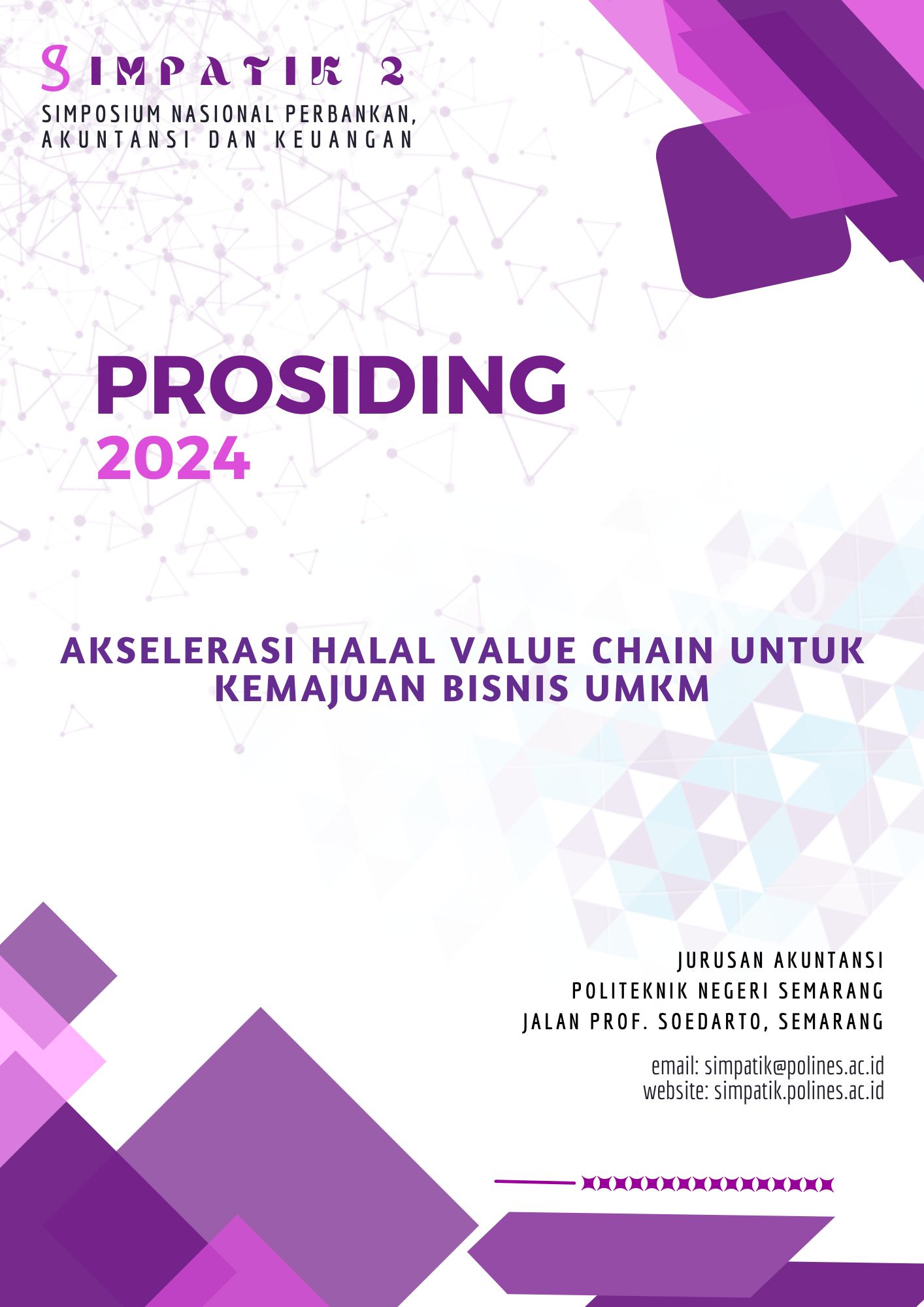PREFERENSI CALON INVESTOR BERDASARKAN FAKTOR DEMOGRAFIK DAN PROFIL RISIKO DI JAWA TENGAH
Keywords:
Preferences, Investment Schemes, potential investors, Demographics, risk schemesAbstract
This research aims to map the preferences of potential investors in Central Java regarding investment schemes based on demographic factors and risk profiles. This research applies knowledge about behavioral finance where it is found that demographic factors such as gender, age, educational background, employment, and the risk profile of investors are closely related to their investment decisions. This research will be tested using the Mann-Whitney U Test and Kruskal Wallis method. The research design is descriptive applied quantitative research. The research sample used the Purposive Sampling method. The data analysis method used is the Mann-Whitney test using IBM SPSS Statistics 20. The results of this research are that there are no differences in the demographic factor indicators of age and gender in investment scheme preferences, while education and employment are different. Based on the risk of investment schemes for demographic factors, age, gender, education and employment are different. The results of this research can provide an overview of the investment scheme map in Central Java and can map high, medium and low risk profiles. from potential investors in Central Java.
References
Amri, K., Qurratul’aini, I., & Julianty. (2018). Preferensi Nasabah Memilih Produk Pembiayaan Bank Aceh Syariah di Kota Banda Aceh. Jurnal Samudra Ekonomi Dan Bisnis, 9(1), 31–41. https://doi.org/10.33059/jseb.v9i1.459
Bhavani, G., & Shetty, K. (2017). Impact of Demographics and Perceptions of Investors on Investment Avenues. Accounting and Finance Research, 6(2), 198–205. https://doi.org/10.5430/afr.v6n2p198
Chaurasia, P. (2017). A study of investment preferences of investors. International Journal of Application or Innovation in Engineering & Management, 6(7), 29– 36.
Chopra, V., & Gondaliya, V. (2020). To Study the Investors Preferences for their Investments. International Journal for Research in Applied Science and Engineering Technology,8(4), 286–296. https://doi.org/10.22214/ijraset.2020.4045
Das, S., & Jain, R. (2014). A study on the influence of demographical variables on the factors of investment- a perspective on the Guwahati region. Impact: International Journal of Research in Humanities, Arts and Literature, 2(6), 97–102.
Fauziah, A., & Surya, M. E. (2016). Peluang Investasi Emas Jangka Panjang Melalui Produk Pembiayaan BSM Cicil Emas (Study pada Bank Mandiri K.C. Purwokerto). Jurnal Pemikiran Islam, XVI(1), 57–73.
Lan, Q., Xiong, Q., He, L., & Ma, C. (2018). Individual investment decision behaviors based on demographic characteristics: Case from China. PLoS ONE, 13(8), 1–16. https://doi.org/10.1371/journal.pone.0201916
Kotler, Philip., dan Armstrong, Gary. (2001). Prinsip-prinsip Pemasaran. Edisi Kedelapan Jilid 1. Jakarta : Penerbit Erlangga.
Lolowang, I. R. . (2019). Pengaruh Persepsi Dan Preferensi Konsumen Terhadap Keputusan Pembelian Rumah Tipe Premium (Studi Pada Konsumen Kawanua
Nasution, L. M. (2017). Statistik Deskriptif. Jurnal Hikmah, 14(1), 49–55. https://doi.org/10.1021/ja01626a006
Naresh, S., & Alamelu, K. (2020). Investors ’ Preference Towards Investments ( With Special Reference To March 2020 – October 2020 During Pandemic Situations In India ). Palarch’s Journal of Archaeology of Egypt/Egyptology, 17(7), 11474–11478.
Pratiwi, I. (2015). Pengaruh Faktor Demografi Terhadap Jenis Investasi Dan Perilaku Investor Pasar Modal Surabaya. Jurnal Ilmu Dan Riset Manajemen, 4, 1–15.
Rakhmat, Jalaludin. (2012). Psikologi Komunikasi. Bandung: PT. Remaja Rosda Karya
Rukajat, Ajat. (2018). Pendekatan Penelitian Kuantitatif. Yogyakarta: Penerbit Deepublish.
Salimah, A. (2018). Analisis Perbandingan Risiko (Risk) Dan Tingkat Pengembalian (Return) Antara Deposito Dengan Emas. Jurnal Manajemen Bisnis, 8(02), 85–92.
Saputra, I. H., & Anastasia, N. (2013). Jenis Investasi Berdasarkan Profil Risiko.Finesta, 1(2), 47–52.
Shinde, C. M., & Zanvar, P. (2015). a Study of Investment Pattern on the Basis of Demographic Traits. International Journal of Research -Granthaalayah, 3(11), 175–205. https://doi.org/10.29121/granthaalayah.v3.i11.2015.2927
Singh, P. K., Tanwar, S., & Yadav, C. S. (2010). Investor’s Behavior and Investment Avenues in Global Downturn: A Case Study of Millennium City. Asia-Pacific Business Review, VI(2), 71–80.
Sugiyono.(2016). Metode Penelitian Pendidikan Pendekatan kuantitatif, Kualitatif, dan R&D. Bandung: Alfabeta.
Sujarweni, Wiratna. (2014). Metodologi penelitian: Lengkap, praktis, dan mudah dipahami. Yogyakarta: PT Pustaka Baru
Sulistyorini, Utami Tri. (2017). Metode Penelitian Analisis Kausal-Regresi. Semarang: Politeknik Negeri Semarang.
Suyanto, & Gio, P. U. (2017). Statistika Nonparametrik dengan SPSS, Minitab, dan R. USU Press Art Design, Publishing & Printing.
Tandelilin, Eduardus. 2017. Portofolio dan Investasi Tori dan Aplikasi. Yogyakarta: PT Kanisius.
Venkataiah, G. ., & Rao, B. . S. P. (2018). Investors’ Perception Towards Various Investment Avenues-a Study in Vijayawada City of Andhra Pradesh. International Journal of Research in Finance & Marketing, 8(8), 22–31. http://euroasiapub.org/current.php
Violeta, J., & Linawati, N. (2019). Pengaruh Anger Traits, Anxiety Traits, Dan Faktor Demografi Terhadap Keputusan Investasi. Jurnal Manajemen Pemasaran, 13(2), 89–96. https://doi.org/10.9744/pemasaran.13.2.89-96
Downloads
Published
Issue
Section
License
Copyright (c) 2024 Theresia Tyas Listyani, Sartono, Manarotul Fatati, Edi Wijayanto, Atif Winda

This work is licensed under a Creative Commons Attribution-ShareAlike 4.0 International License.



